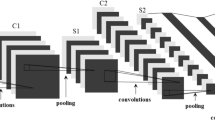Abstract
Multiple-Input-Multiple-Output communication systems demand fast sphere decoding with high performance. To speed up the computation, we propose a scheme with multiple fixed complexity sphere decoders to construct a parallel soft-output fixed complexity sphere decoder (PFSD). The proposed decoder is highly parallel and has performance comparable to soft-output list fixed complexity sphere decoder (LFSD) and K-best sphere decoder. In addition, we propose a parallel QR decomposition algorithm to lower the preprocessing overhead, and a low complexity LLR algorithm to allow parallel update of LLR values. We demonstrate that the PFSD algorithm can increase the throughput and reduce bit error rate of a soft-output solution in a 4 × 4 16-QAM system, and has superior performance compared to other soft decoders with comparable throughput and computation complexity. The PFSD algorithm has been mapped onto Xilinx XC4VLX160 FPGA. The resulting PFSD decoder can achieve up to 75 Mbps throughput for 4 × 4 64-QAM configuration at 100MHz with low control overhead.






Similar content being viewed by others
References
Butler, M. R. G., & Collings, I. B. (2004). A zero-forcing approximate log-likelihood receiver for MIMO bit-interleaved coded modulation. IEEE Communication Letter, 8, 105–107.
Foschini, G. J. (1996). Layered space-time architecture for wireless communication in a fading environment when using multi-element antenna. Bell Labs Technical Journal, 1, 41–59.
Mobasher, A., Taherzadeh, M., Sotirov, R., & Khandani, A. K. (2005). A near maximum likelihood decoding algorithm for MIMO systems based on semi-definite programming. In IEEE international symposium on information theory (ISIT) (pp. 1686–1690).
Sidiropoulos, N. D., & Luo, Z.-Q. (2006). A semidefinite relaxation approach to MIMO detection for high-order QAM constellations. IEEE Signal Processing Letters, 13, 525–528.
Pohst, M. (1981). On the computation of lattice vectors of minimal length, successive minima and reduced bases with applications. In ACM special interest group on symbolic and algebraic manipulation (SIGSAM Bull.) (Vol. 15, pp. 37–44).
Hassibi, B., & Vikalo, H. (2005). On the sphere-decoding algorithm I, expected complexity. IEEE Transactions on Signal Processing, 53, 2806–2818.
Guo, Z., Nilsson, P. (2006). Algorithm and implementation of the K-best sphere decoding for MIMO detection. IEEE Transactions on Selected Areas in Communications, 44, 491–503.
Chen, S., Zhang, T., & Xin, Y. (2007). Relaxed K-best MIMO signal detector design and VLSI implementation. IEEE Transactions on VLSI Systems, 15, 328–337.
Bhagawat, P., Dash, R., & Choi, G. (2009). Systolic like soft-detection architecture for 4 × 4 64-QAM MIMO system. In IEEE The design, automation, and test in Europe (DATE) (pp. 870–873).
Barbero, L. G., & Thompson, J. S. (2008). Extending a fixed-complexity sphere decoder to obtain likelihood information for Turbo-MIMO systems. IEEE Transactions on Vehicular Technology, 57, 2804–2814.
Caire, G., Taricco, G., & Biglieri, E. (1998). Bit-interleaved coded modulation. IEEE Transaction of Information Theory, 8, 927–946.
Studer, C., Burg, A., & Bölcskei, H. (2008). Soft-output sphere decoding: Algorithms and VLSI implementation. IEEE Transactions on Selected Areas in Communications, 26, 290–300.
Fincke, U., & Pohst, M. (1985). Improved methods for calculating vectors of short length in a lattice, including a complexity analysis. Mathematics of Computation, 44, 161–163.
Schnorr, C. P., & Euchner, M. (1991). Lattice basis reduction: Improved practical algorithms and solving subset sum problems. Fundamentals of Computation Theory, 529, 68–85.
Wong, K. W., Tsui, C. Y., Cheng, R. S.-K., & Mow, W. H. (2002). A VLSI architecture of a K-best lattice decoding algorithm for MIMO channels. In IEEE international symposium on circuits and systems (ISCAS) (Vol. 3, pp. 273–276).
Barbero, L. G., & Thompson, J. S. (2006). A fixed-complexity MIMO detector based on the complex sphere decoder. In IEEE international workshop on signal processing advances for wireless communications (SPAWC) (pp. 1–5).
Hess, C., Wenk, M., Burg, A., Luethi, P., Studer, C., Felber, N., et al. (2007). Reduced-complexity MIMO detector with close-to-ML error rate performance. In ACM Great Lakes symposium on VLSI (pp. 200–203).
Li, M., Bougard, B., Lopez, E. E., Bourdoux, A., Novo, D., Van Der Perre, L., et al. (2008). Selective spanning with fast enumeration: A near maximum-likelihood MIMO detector designed for parallel programmable baseband architectures. In IEEE international conference on communications (ICC) (pp. 737–741).
Milliner, D. L., Zimmermann, E., Barry, J. R., & Fettweis, G. P. (2008). A framework for fixed complexity breadth-first MIMO detection. In IEEE international symposium on spread spectrum techniques and applications (ISSSTA) (pp. 129–132).
Li, M., Novo, D., Bougard, B., Naessens, F., Van der Perre, L., & Catthoor, F. (2008). An implementation friendly low complexity multiplierless LLR generator for soft MIMO sphere decoders. In IEEE workshop on signal processing systems (SiPS) (pp. 118–123).
Siti, M., & Fitz, M. P. (2007). On layer ordering techniques for near-optimal MIMO detectors. In IEEE wireless communications and networking conference (WCNC) (pp. 1199–1204).
Siti, M., & Fitz, M. P. (2006). A novel soft-output layered orthogonal lattice detector for multiple antenna communications. In IEEE international conference on communications (ICC) (pp. 1686–1691).
Jalden, J., Barbero, L. G., Ottersten, B., & Thompson, J. S. (2009). The error probability of the fixed-complexity sphere decoder. IEEE Transactions on Signal Processing, 57, 2711–2720.
El-Amawy, A., & Dharmarajan, K. R. (1989). Parallel VLSI algorithm for stable inversion of dense matrices. In Computers and digital techniques, IEE proceedings E (Vol. 236, pp. 575–580).
Liu, K. R., Hsieh, S.-F., & Yao, K. (1992). Systolic block householder transformation for RLS algorithm with two-level pipelined implementation. IEEE Transactions on Signal Processing, 40, 946–958.
Wübben, D., Böhnke, R., Rinas, J., Kühn, V., & Kammeyer, K. D. (2001). Efficient algorithm for decoding layered space-time codes. IEEE Transactions on Electronics Letters, 37, 1348–1350.
Vucetic, B., & Yuan, J. (2000). Turbo codes: Principles and applications. Norwell: Kluwer.
Hochwald, B. M., & Brink, S. (2003). Achieving near-capacity on a multiple-antenna channel. IEEE Transactions on Communications, 51, 389–399.
Milliner, D. L., Zimmermann, E., Barry, J. R., & Fettweis, G. (2008). Channel state information based LLR clipping in list MIMO detection. In IEEE international symposium on personal, indoor and mobile radio communications (PIMRC) (pp. 1–5).
Burg, A., Borgmann, M., Wenk, M., Zellweger, M., Fichtner, W., & Bolcskei, H. (2005). VLSI implementation of MIMO detection using the sphere decoding algorithm. IEEE Journal of Solid-State Circuits, 40, 1566–1577.
Xilinx. Xilinx multi-port memory controller. http://www.xilinx.com/support/documentation/ip_documentation/mpmc.pdf.
Xilinx. Processor local bus. http://www.xilinx.com/support/documentation/ip_documentation/plb_v46.pdf.
Barbero, L. G., & Thompson, J. S. (2006). FPGA design considerations in the implementation of a fixed-throughput sphere decoder for MIMO systems. In IEEE international workshop on signal processing advances for wireless communications (SPAWC) (pp. 1–5).
Bhagawat, P., Dash, R., & Choi, G. (2008). Architecture for reconfigurable MIMO detector and its FPGA implementation. In IEEE international conference on electronics, circuits and systems (ICECS) (pp. 61–64).
Cupaiuolo, T., Siti, M., & Tomasoni, A. (2010). Low-complexity high throughput VLSI architecture of soft-output ML MIMO detector. In Design, automation test in Europe conference exhibition (DATE), 2010 (pp. 1396–1401).
Author information
Authors and Affiliations
Corresponding author
Rights and permissions
About this article
Cite this article
Qi, Q., Chakrabarti, C. Parallel High Throughput Soft-Output Sphere Decoding Algorithm. J Sign Process Syst 68, 217–231 (2012). https://doi.org/10.1007/s11265-011-0602-1
Received:
Revised:
Accepted:
Published:
Issue Date:
DOI: https://doi.org/10.1007/s11265-011-0602-1




